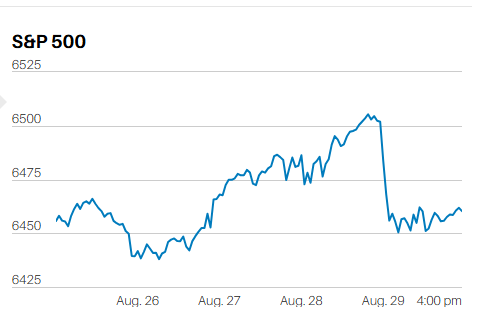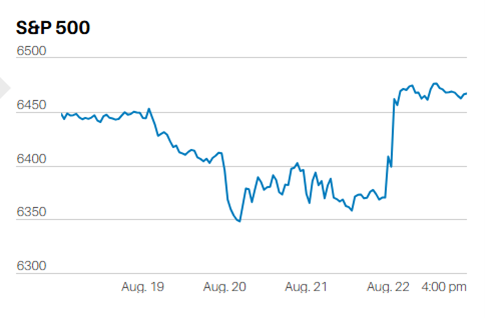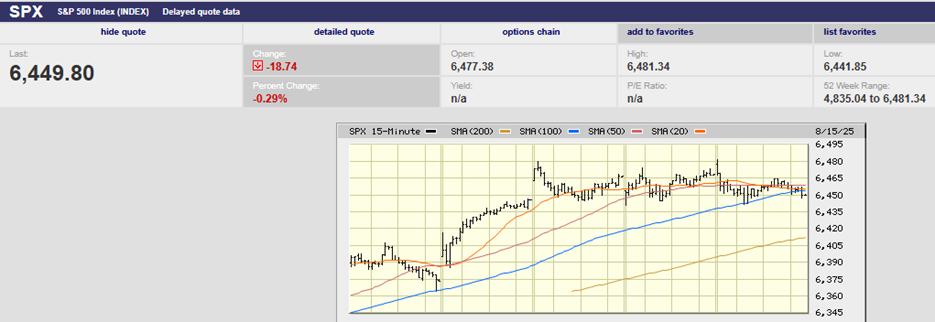According to JP Morgan, the likelihood of a recession in 2022 is rising
Christopher Norwood • March 14, 2022
Selling Losers & Winners

The body content of your post goes here. To edit this text, click on it and delete this default text and start typing your own or paste your own from a different source.

Executive Summary The S&P 500 rose 1.7% last week to finish at 6664.01 The Nasdaq & the Dow Jones rose as well last week We had an inside day last Monday, then an inside week Earnings season is here The four credit events might snowball into something more serious Credit spreads have started to react, widening over the last two weeks Bond yields fell (yields down, price up) last week The dollar index is also falling The Federal Reserve has been draining excess reserves from the system since 2022 It appears as if the Fed has no choice but to end its Quantitative Tightening (QT) program The Stock Market The S&P 500 rose 1.7% last week to finish at 6664.01. The Nasdaq 100 was up 2.4% and the Dow was up around 1.5%.

Executive Summary The S&P 500, Nasdaq & the Dow Jones fell last week President Trump tanked the market Friday with a post about trade talk troubles with China The S&P 500 still has a lot of momentum, though Bond investors aren’t expecting a recession any time soon The Atlanta Fed GDPNow tool is estimating 3.8% real GDP growth for Q3 The AI boom is increasingly dependent on circular cash flows The U.S. stock market has a lot of exposure to AI The Stock Market

Executive Summary The S&P 500 rose 1.1% to close the week at 6715.79 The Nasdaq was down 0.3% last week The Dow Jones Industrial Average was up 1.99%. The government shutdown materialized on Wednesday The Fed is expected to cut the funds rate by another quarter point in October Unemployment isn’t rising, and consumers are still spending Recession red flags The last 18 years have been unusual A recession is not Norwood Economics’ base case

Executive Summary The S&P 500 fell 0.3% last week to finish at 6,643.66 The Dow, Nasdaq, and Tech sector ended lower as well The S&P average annual total return is 7.9% since the 2000 market peak The economy grew 3.8% in Q2 (third estimate), up from the prior 3.3% second estimate Financial conditions remain loose The 10-year Treasury yield has little room to fall from current levels The elderly and poor suffer most from the impacts of inflation Norwood Economics manages diversified portfolios This time is NOT different The S&P might see negative returns over the next decade Economic growth is the lowest in the past 25 years There are no piles of cash sitting on the sidelines The Stock Market

Executive Summary The S&P 500 rose 1.2% last week to finish at 6,664.36 The S&P 500 is up 13.31% year-to-date The S&P is expensive The Fed updated its “Dot Plot” The 10-year yield rose last week despite the Fed’s rate cut The Fed is signaling at least two more rate cuts by year's end A pullback of 10% or so wouldn’t be unusual, but there’s no data signaling recession yet The top ten most expensive S&P 500 companies make up over 39% of the market cap UBS economists estimate a 93% chance that the US will slip into a recession this year Investors should review their portfolios before the next bear market The Stock Market

Executive Summary The S&P 500 rose 1.6% last week to finish at 6,584.3 The stock market rises long-term due to earnings growth and interest rates A stock is ownership in a business Investors are willing to pay more for a dollar’s worth of earnings today than in the past Profit margins are already near record highs The Volatility Index (VIX) closed the week at 14.76 The market is setting new highs The CME FedWatch tool places the odds at 100% for a rate cut Wednesday The August jobs report and last week’s jobs revision are driving rate cut expectations Cutting the fed funds rate isn’t the answer to slower job growth Higher long-term rates will negate any benefit from a rate cut The Stock Market

Executive Summary The S&P 500 fell 0.3% last week to finish at 6,481.50 The CAPE ratio is currently at its second highest reading ever Valuation is a lousy timing mechanism, but an excellent predictor of future returns Interest rates declined last week The 2-Year Treasury yield fell to 3.51% by the close on Friday The 10-Year Treasury yield also fell, ending the week at 4.10%. The CME FedWatch tool has the odds at 73% of a Fed funds rate of 3.50% to 3.75% or lower by year's end The weak jobs report on Friday showed that only 22,000 new jobs were added in August Unemployment rose to 4.3% from 4.2%. The aggregate weekly payrolls index fell to 4.4% in August “We’re back in that world of uncertainty," states Art Hogan, chief market strategist at B. Riley Wealth The Stock Market

Executive Summary The S&P 500 finished down 0.1% at 6,460.26 last week The S&P is up 9.8% on the year. Industrials and Communication Services are leading the way Personal income rose in line with expectations for July, climbing 0.4% up from 0.3% the prior month A weak payroll number on 5 September means a Fed rate cut on 17 September Unemployment is expected to rise, but it is still low relative to history Wage growth close to 4% will make it hard for inflation to fall to 2% The predictions market has the odds of a recession at 8% The ICE BofA US High Yield Index spread is near all-time lows A bear steepener is increasingly likely. A bear steepener is when the yield curve falls at the short end but rises at the long end

Executive Summary The S&P 500 rose 0.3% last week to close at 6466.91 The CME FedWatch tool initially raised the chances of a September rate cut to 84.7% The stock and bond markets opted to buy Fed Chairman Powell’s Friday morning speech Investors now seem certain that the Fed will start cutting again The current five-year breakeven is 2.48% The 10-year breakeven is 2.41% The core Consumer Price Index (CPI) is 3.1% Disinflation appears to be over as the inflation rate is no longer falling The St Louis Fed’s Financial Stress Index is negative 0.8153. A negative number means below-average financial market stress The real 10-year interest rate is falling. Money is getting cheaper. The Fed’s balance sheet is shrinking, but is still 22% of GDP An indebted economy can’t withstand high interest rates The Stock Market

Executive Summary The S&P 500 rose 1.01% last week to finish at 6,449.80 The stock market keeps hitting new highs Market strategists are expecting earnings growth to accelerate in 2026 Margins remain near record highs Corporate profit margins will likely take a hit from tariffs Passing tariff costs on to the consumer means raising prices Core CPI rose by 0.3% in July The PPI jumped 0.9% last month, the largest monthly increase in more than three years Buffett says it’s dangerous when the market cap rises to more than 140% of GDP. Currently, the ratio is above 200%. The massive increase in the Fed's balance sheet over the last 25 years has led to financial asset price inflation The Stock Market

